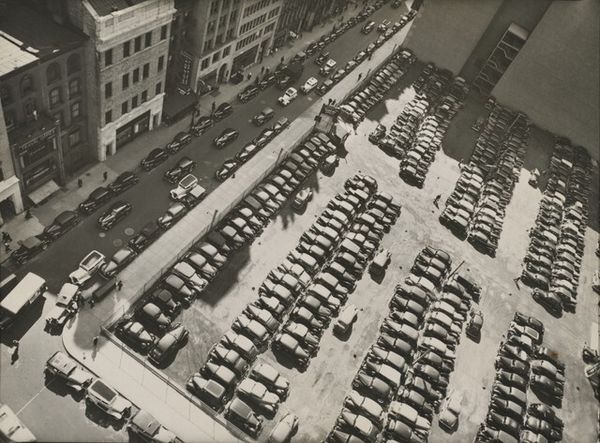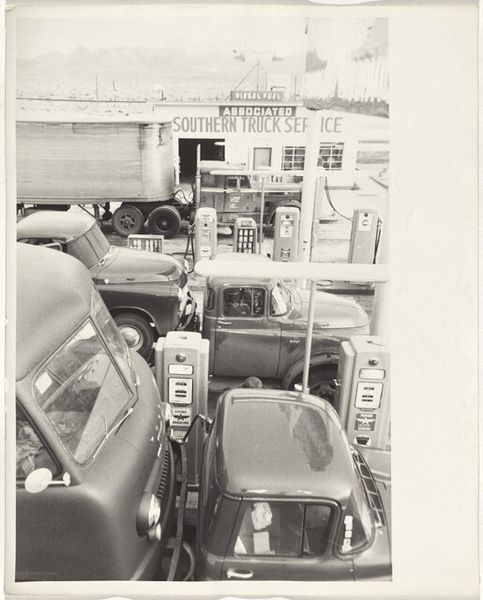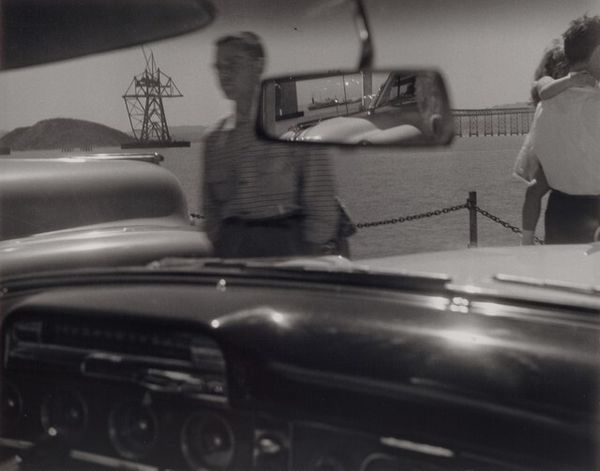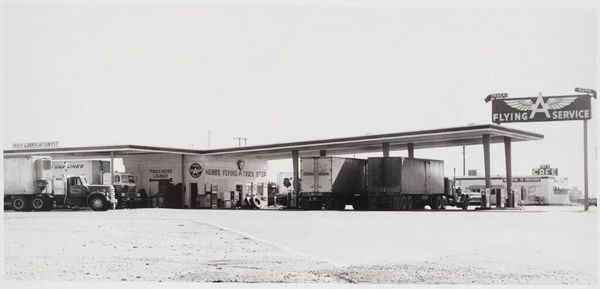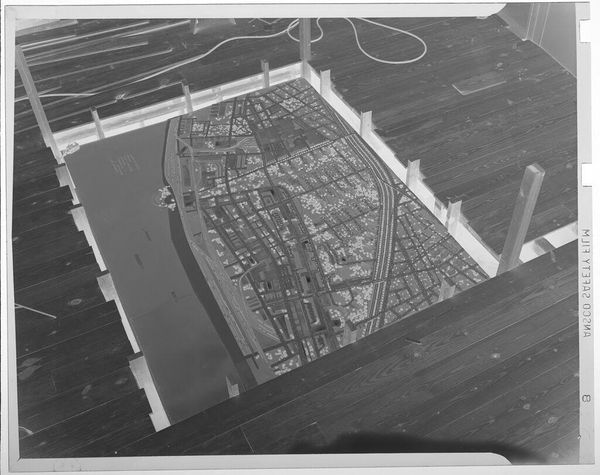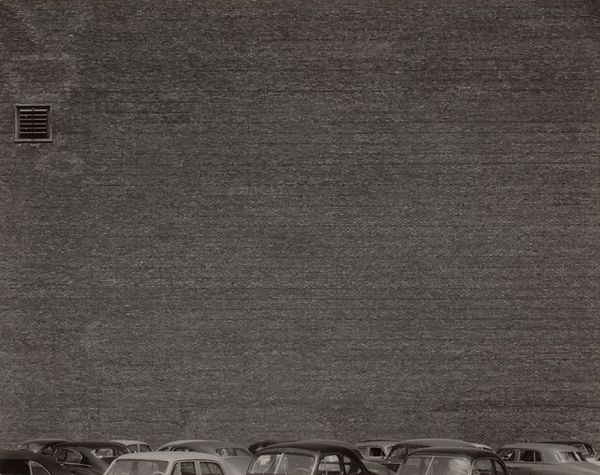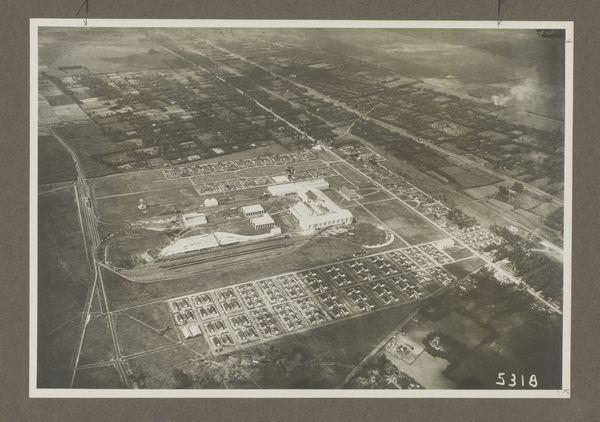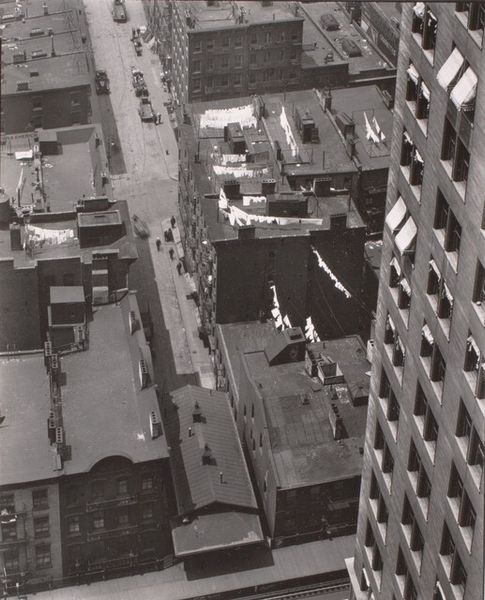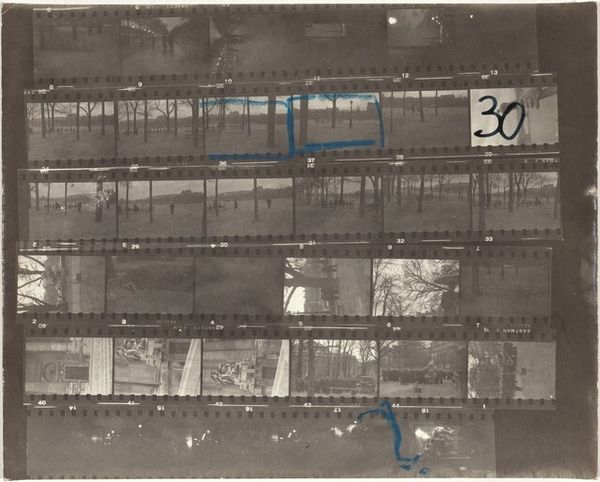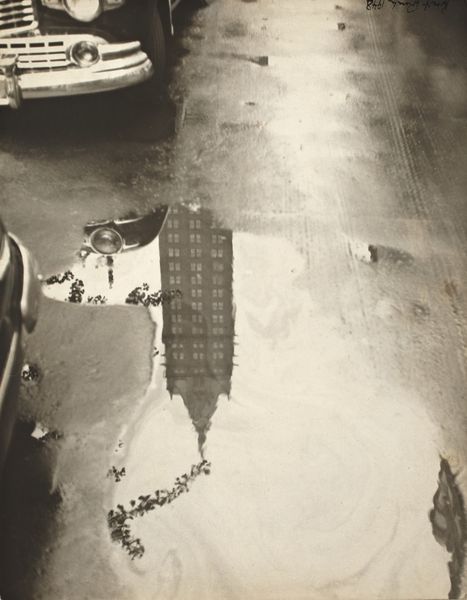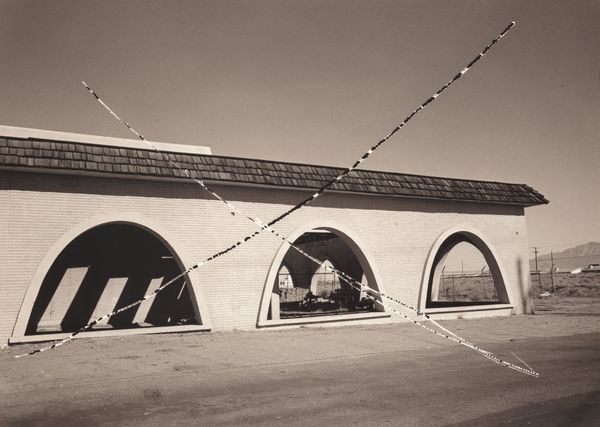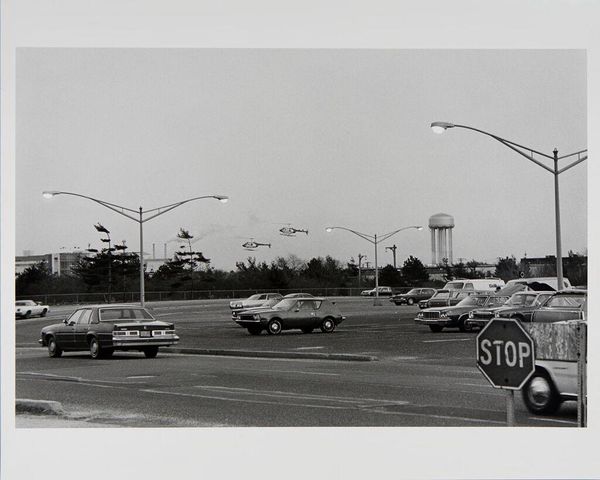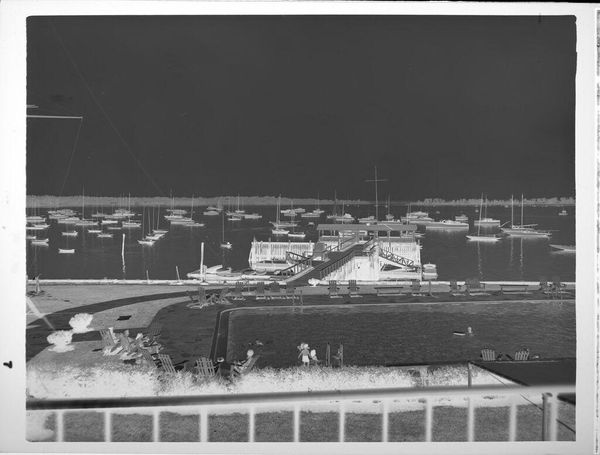
Aerial View: Parking Lot, Midway Shopping Center--Saint Paul, Minnesota Possibly 1982 - 1983
0:00
0:00
photography, gelatin-silver-print
#
landscape
#
urban cityscape
#
street-photography
#
photography
#
gelatin-silver-print
#
cityscape
#
building photography
#
realism
Dimensions: image: 36.9 x 45.2 cm (14 1/2 x 17 13/16 in.) sheet: 40.6 x 50.6 cm (16 x 19 15/16 in.)
Copyright: National Gallery of Art: CC0 1.0
Curator: Frank Gohlke’s black and white photograph, titled "Aerial View: Parking Lot, Midway Shopping Center--Saint Paul, Minnesota," was taken possibly between 1982 and 1983. It is a gelatin-silver print. Editor: It's desolate, somehow. All these little rectangles, the cars, lined up with a weird formality. The gray scale just emphasizes the mundane geometry of consumerism. Curator: The aerial perspective flattens the hierarchy, doesn't it? We’re presented with an objective record of how spaces are utilized and how they relate to buildings and the overall design. This also captures the rise of suburban shopping culture, and the reliance on automobiles and expansive parking facilities as key elements of societal infrastructure. Editor: Right, but what is made here? What do these raw materials, these cars and asphalt and concrete, represent in terms of actual labor? How does Gohlke’s silver gelatin process transform the site and, in the end, invite critique? I mean, it's not just an unmediated record, is it? Curator: Not at all. While seemingly objective, its realism serves to underline how our constructed environment actively dictates patterns of daily existence. Think of it as documentation holding latent critiques about planning, land use, and reliance on certain models of economic growth. The gallery labels inform me Gohlke worked to connect this and similar projects with his environmental concerns. Editor: Concerns rooted in how material landscapes are shaped and used... The absence of human figures, except by proxy, through these metal, glass and rubber boxes, drives the point home. They are all heading indoors to consume what goods are stocked on the shelves inside, presumably. What were the typical jobs held by these consumerist participants? Who poured the cement, welded the metal, assembled the interiors? These are questions this view can stimulate. Curator: Yes. The photograph freezes this single, critical juncture, forcing an understanding about our engagement with our resources. In what ways, and at whose expense? The lack of other life is pretty pointed. Editor: The tonal range made available through gelatin silver enhances that, no? Look how smoothly these various textural components interact. I'll wager hours of chemical labour made it possible to get such an exact, smooth print like this, one that invites us to contemplate our place within its stark presentation of value, waste, and societal progress. Curator: Indeed, reflecting on the scale and the content of it I believe it encourages discourse about the impacts of infrastructure development in everyday experiences. Editor: And in asking 'what' something is we necessarily ask, 'how was it made,' right? And the making says something critical.
Comments
No comments
Be the first to comment and join the conversation on the ultimate creative platform.
